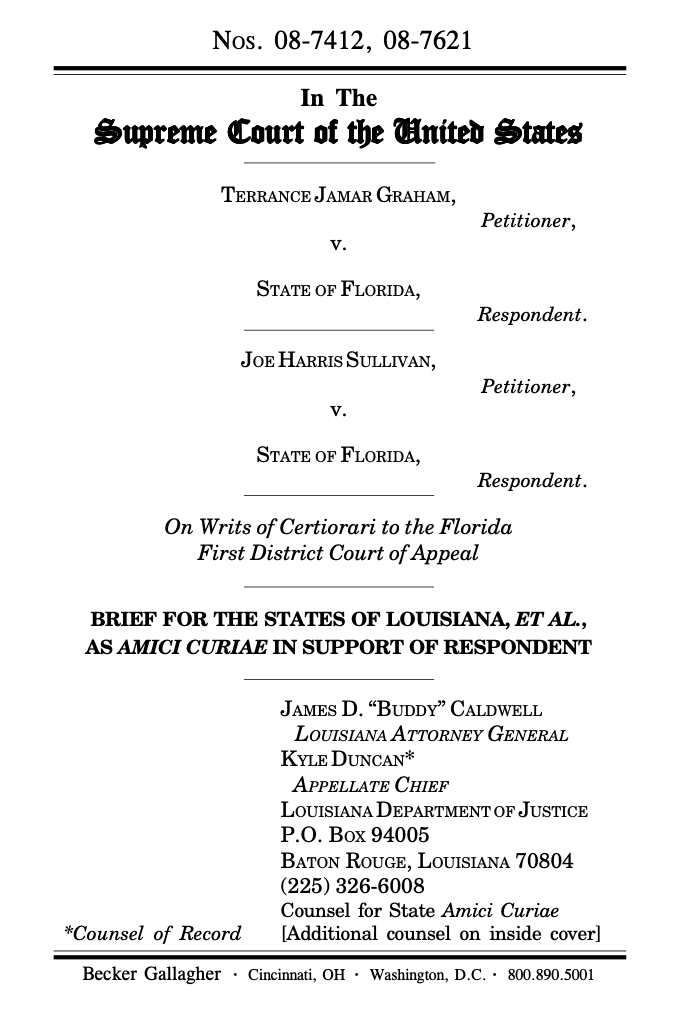
Summary of Argument
No one wants to believe that young people can commit horrible crimes. But sometimes they do. And no one wants to consider whether they should serve lengthy prison terms. But States must consider it, since they are responsible to their own citizens for protecting them, for deterring crime, for assuaging the victims, and for punishing the guilty. Consequently, as Part I explains, the Eighth Amendment leaves States considerable latitude in deciding how to sentence violent juvenile offenders. It is a rare and agonizing decision to sentence a juvenile to life-without-parole. But rare does not mean unconstitutional. Rather, rarity is an index of mercy—of reluctance to take this severe step. And yet, as Part II describes, States have overwhelmingly made the reasoned legislative choice that certain crimes—such as rape, robbery and kidnapping—are so morally reprehensible, so damaging to victims, and so undermine a community’s sense of security, that the law’s second-most severe sentence should be available, even if the offender is a juvenile. The District of Columbia and the federal government have done so as well. And even the few States that expressly disallow juvenile life-without-parole sentences would nonetheless permit lengthy mandatory sentences of up to 50 years. Finally, as Part III explains, politically accountable state legislatures are the ones that should weigh such painful choices, and they have done so vigilantly. The best example is the kaleidoscope of state transfer and waiver provisions through which juveniles may become subject to adult penalties. Through those mechanisms, States have grappled profoundly with every facet of juvenile violence—such as an offender’s age, maturity, psycho-social development, criminal background, and potential for rehabilitation. States thus expose juveniles to a possible life-without parole sentence only in carefully considered circumstances in which deterrence and punishment outweigh rehabilitation.
Far from condemning such a choice, this Court has tacitly approved it. In Roper v. Simmons, 543 U.S. 551 (2005), the Court reasoned that States had deterrence options for violent juveniles other than the death penalty. The Court deemed it “worth noting that the punishment of life imprisonment without the possibility of parole is itself a severe sanction, in particular for a young person.” Id., at 572. The Court should not now interpret the Eighth Amendment to remove the States’ power to impose this sanction on violent juvenile criminals such as the Petitioners.